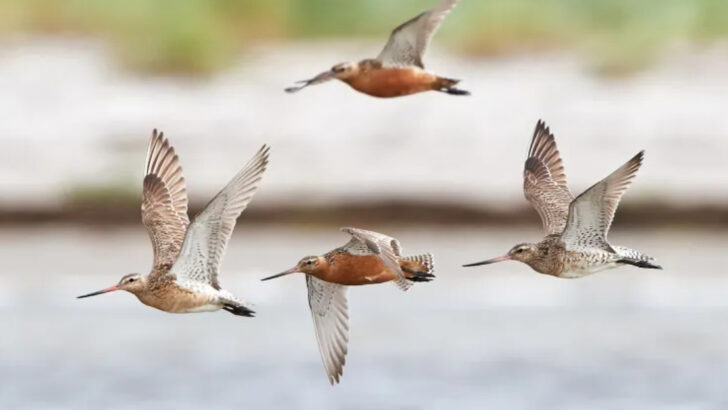They eat, sleep, and soar without ever touching the ground.
Somewhere over the open ocean, thousands of miles from the nearest speck of land, a wing slices through the clouds. No pit stops. No rest breaks. Just raw endurance, sky-high drama, and birds built like feathered jetliners.
These are the elite aviators of the animal world—champions of the long haul. We’re talking nonstop flights that would put your longest road trip to shame. From terns that chase summer across hemispheres to albatrosses that practically live above the sea, these birds are in it for the long run… or rather, the long fly.
Ready to meet the airborne athletes who make land look optional?
Wandering Albatross

The Wandering Albatross is a marvel of the skies. With its enormous wingspan, it glides effortlessly over the oceans, rarely needing to land. This majestic bird can travel thousands of miles, crossing entire ocean basins with ease.
Its wings, spanning up to 11 feet, allow it to harness wind currents, minimizing energy expenditure. Often, these birds are seen gliding gracefully, showcasing their striking white and black plumage.
Their endurance and navigational skills are unmatched, making them true pioneers of the open sea. The Wandering Albatross truly embodies the spirit of boundless exploration.
Arctic Tern
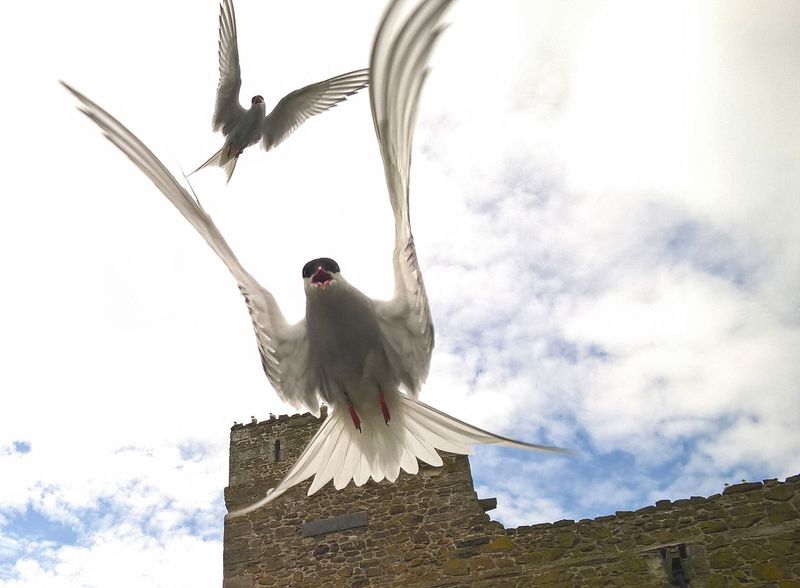
The Arctic Tern is a champion migrator, known for its astonishing long-distance flights. Each year, it embarks on an epic journey from its Arctic breeding grounds to the Antarctic, covering nearly 25,000 miles round trip.
This small, agile bird navigates vast distances with remarkable precision. Its slender body and pointed wings are perfectly adapted for sustained flight.
The Arctic Tern’s plumage is a striking mix of grey and white, with a bright red beak and feet. Witnessing their migration is witnessing a testament to nature’s endurance and resilience.
Sooty Shearwater
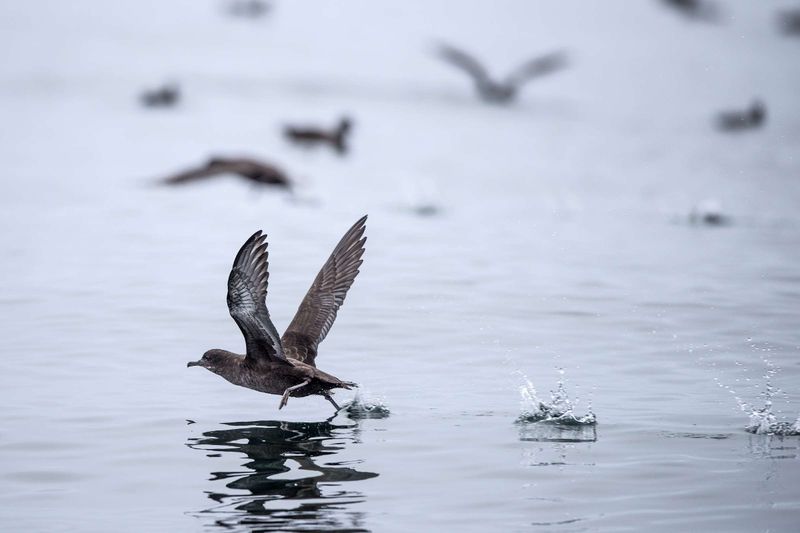
With a sleek, dark silhouette, the Sooty Shearwater travels the world’s oceans with extraordinary endurance. These birds embark on trans-equatorial migrations, traveling over 40,000 miles annually.
They navigate effortlessly over vast expanses of water, utilizing dynamic soaring techniques to conserve energy. Their plumage, a sooty grey, contrasts beautifully with the ocean’s blue waves.
The Sooty Shearwater’s adept flying skills and stamina make it one of the most accomplished travelers of the avian world. Their journey across hemispheres is a wonder of nature’s migratory marvels.
Bar-tailed Godwit
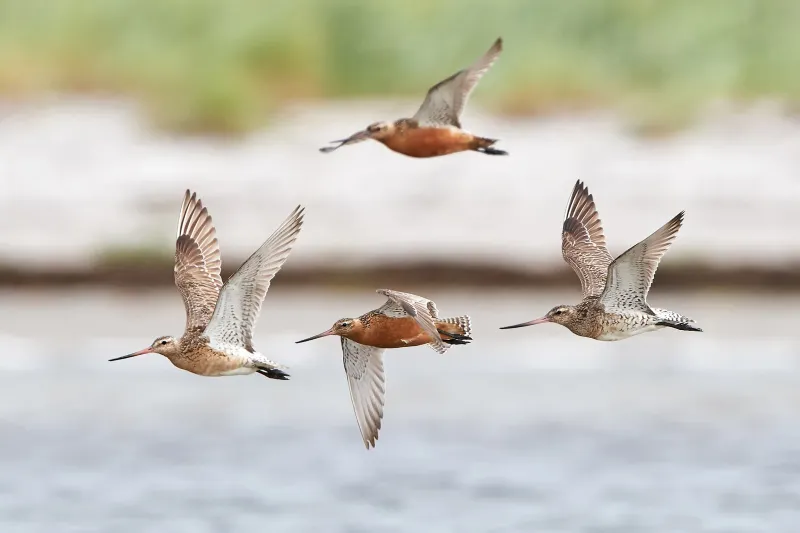
The Bar-tailed Godwit holds the record for the longest non-stop flight of any bird. With a determined spirit, it travels from Alaska to New Zealand, covering over 7,000 miles without a break.
This remarkable feat of endurance is aided by its streamlined body and long, pointed wings. The godwit’s plumage is a tapestry of browns and whites, blending with coastal landscapes.
This bird’s commitment to its journey showcases the incredible potential of avian endurance. The Bar-tailed Godwit is a living testament to the wonders of migratory perseverance.
Grey-headed Albatross
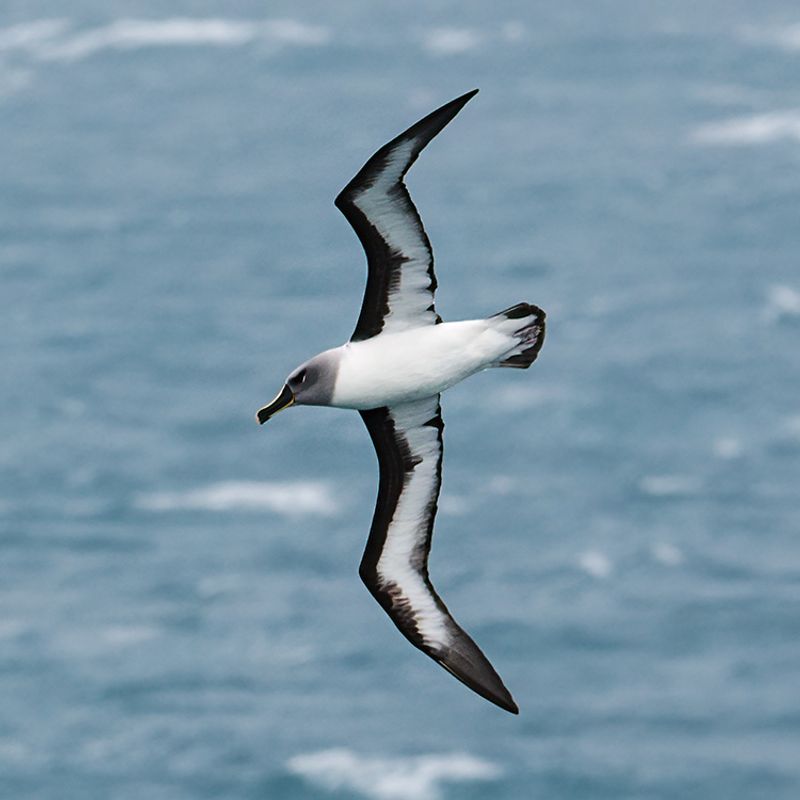
The Grey-headed Albatross is an elegant flyer, known for its extensive oceanic journeys. This bird roams the Southern Ocean, navigating harsh winds and waves with astounding grace.
Its grey head and contrasting white body are distinctive markers against the vast blue expanse. With wings designed for dynamic soaring, the Grey-headed Albatross can travel thousands of miles without needing to rest.
These birds exemplify resilience and adaptability, thriving in some of Earth’s most challenging conditions. The Grey-headed Albatross is a symbol of the untamed beauty of the open sea.
Black-browed Albatross
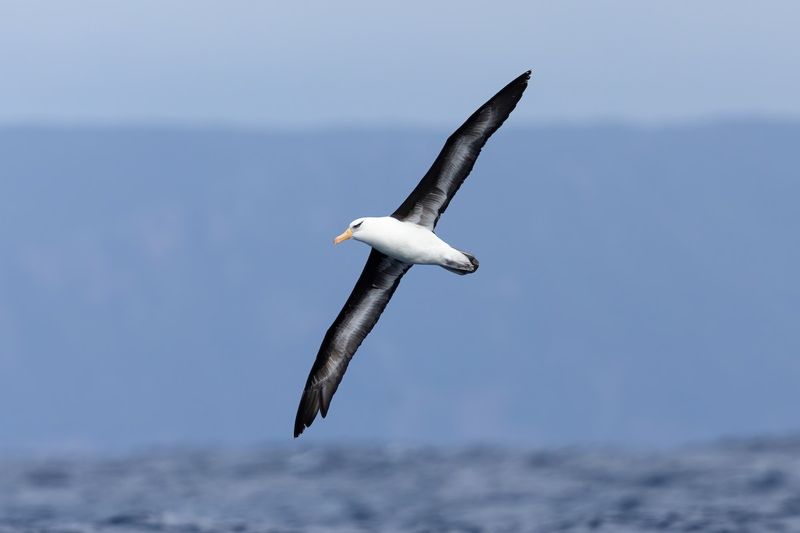
With defined black eyebrows, the Black-browed Albatross is a striking figure against the ocean backdrop. This bird travels extensive distances, primarily across the Southern Hemisphere’s oceans.
Its ability to glide effortlessly over waves is facilitated by a wingspan that can reach up to 8 feet. The black-browed albatross’s adaptive flying skills ensure it covers vast areas in search of food, showcasing resilience and determination.
Its flights over unending oceanic stretches highlight the relentless spirit of these long-distance navigators. The Black-browed Albatross is a beacon of endurance and grace.
Northern Fulmar
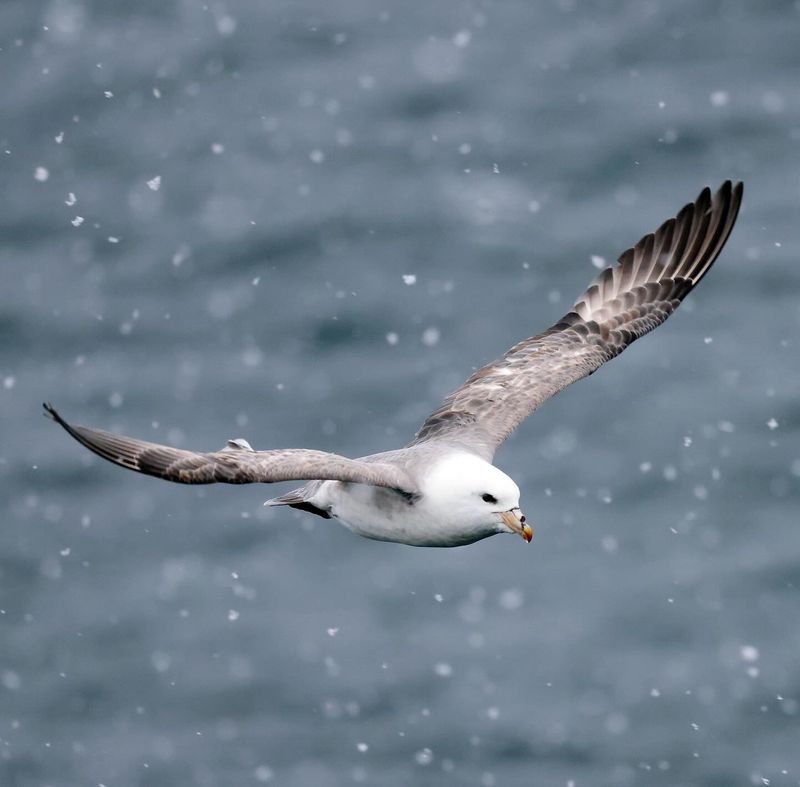
The Northern Fulmar is a sturdy, stocky bird that embraces the challenges of the North Atlantic. Its flights cover impressive distances, often in the harshest of weathers. With a slightly tubenosed appearance, these birds exhibit outstanding navigation skills.
Their plumage is a soft grey and white, complementing the ocean’s hues. The Northern Fulmar is a master of the air, using dynamic soaring techniques to travel far without frequent landings.
They are a reminder of nature’s resilience and the power of instinctual navigation across boundless seas.
Red Knot

The Red Knot is a small shorebird with a mighty journey, flying from its Arctic breeding grounds to the southern tip of South America. It covers this extraordinary distance twice a year, showcasing its incredible stamina.
With a robust body adapted for long-haul flight, the Red Knot’s plumage turns a vibrant red during the breeding season. As they navigate vast coastlines and open seas, their synchronized flocks create mesmerizing aerial displays.
Their annual migration is a testament to the endurance ingrained in the avian world.
Wilson’s Storm Petrel
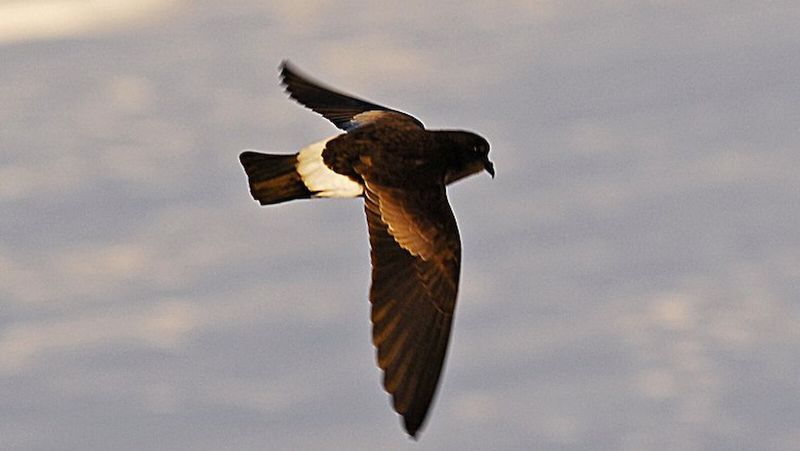
Wilson’s Storm Petrel, a small yet tenacious bird, is found fluttering above the ocean waves. Despite its size, it embarks on long migrations across the Atlantic and Pacific Oceans.
These birds hover close to the water, pecking at the surface for food. Their dark plumage with a white rump is distinctive, and their flight is a spectacle of agility and endurance.
Wilson’s Storm Petrels are a testament to nature’s ingenuity in adapting to open ocean life. Their presence on the high seas highlights their role in the vast marine ecosystem.
Great Shearwater
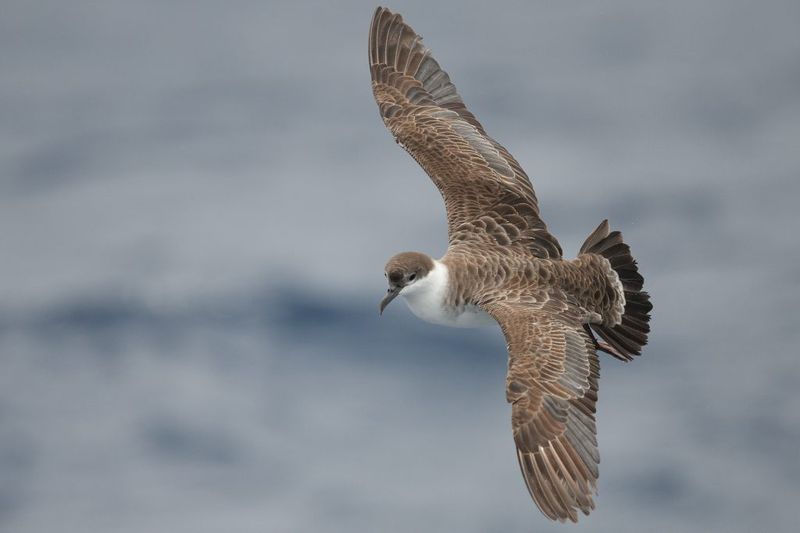
The Great Shearwater is known for its lengthy migrations across the Atlantic Ocean. With a streamlined body, it covers vast distances, utilizing dynamic soaring techniques to conserve energy.
These birds exhibit a graceful flight, their brown and white plumage blending seamlessly with the sea. They are often seen traveling in large flocks, their synchronized movements a marvel to behold.
The Great Shearwater’s remarkable journeys highlight the interconnectedness of global oceanic habitats and the incredible feats of endurance these birds display.
Sabine’s Gull

Sabine’s Gull, an elegant bird, is known for its migratory path from the Arctic to the southern hemisphere. Its unique wing pattern, with black, white, and grey, is a striking sight against the ocean’s palette.
These gulls undertake long journeys over the sea, navigating with impressive precision. Their adaptation to both polar and temperate environments showcases remarkable versatility.
The migratory habits of Sabine’s Gull demonstrate nature’s incredible diversity and the enduring spirit of avian travelers. Their flights connect distant corners of the world, embodying a true globe-trotter spirit.
Long-tailed Jaeger
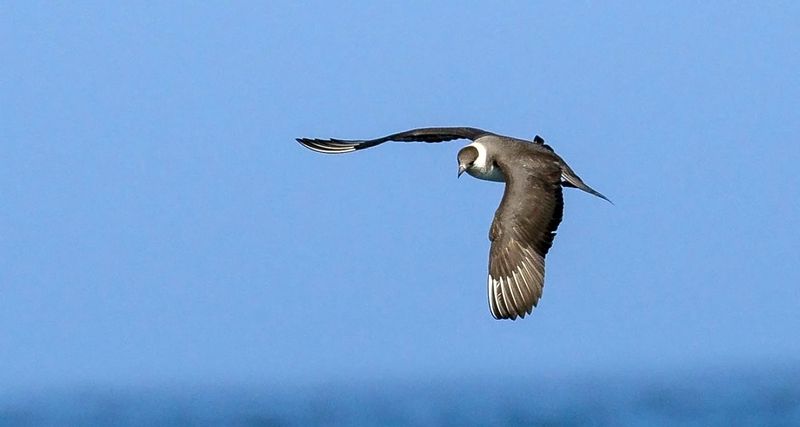
The Long-tailed Jaeger is a slender, agile bird that spends much of its life at sea. Known for its long, elegant tail feathers, it embarks on migrations spanning thousands of miles. These birds are expert aerialists, often chasing other seabirds to steal food.
Their plumage is a mix of greys and browns, perfectly adapted for life at sea. The Long-tailed Jaeger’s long-distance travels are a testament to its adaptability and survival skills in the harsh marine environment.
Their flights are a dance of survival and persistence over the vast oceans.
White-chinned Petrel
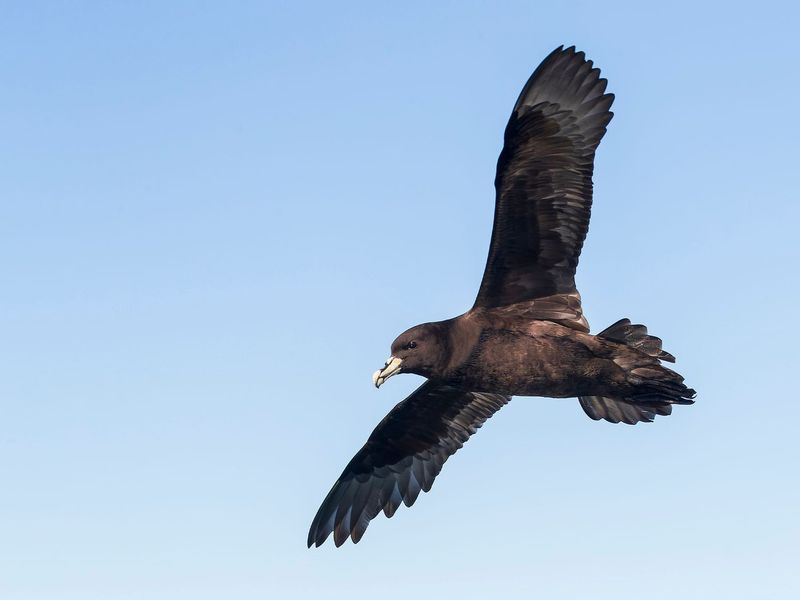
The White-chinned Petrel, a robust seabird, is known for its extensive oceanic voyages. With a distinctive white chin, these birds navigate the Southern Oceans with ease.
Their dark plumage contrasts sharply against the sea’s surface, making them a striking sight. White-chinned Petrels utilize dynamic soaring to cover great distances, conserving energy during their lengthy flights.
Their ability to traverse the open ocean highlights their adaptability and endurance. These petrels embody the spirit of exploration, continuously roaming the vast marine wilderness.
Leach’s Storm Petrel
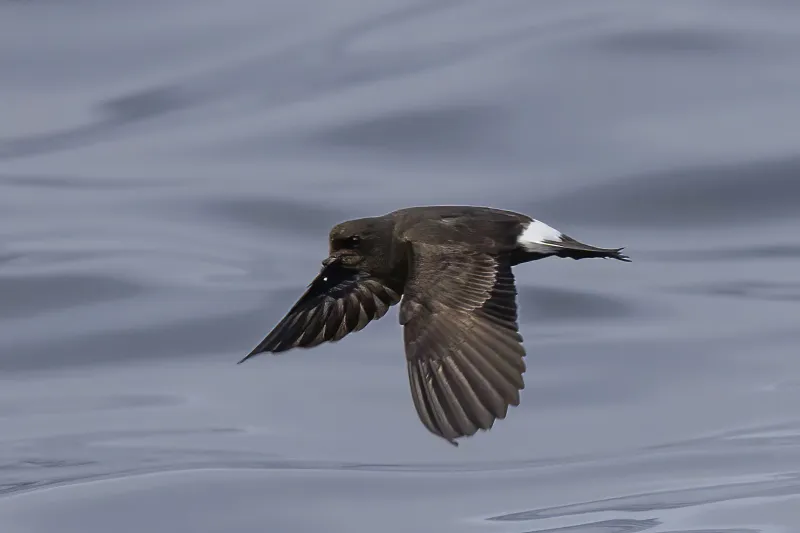
Leach’s Storm Petrel is a small bird with a big presence over the vast open seas. Known for its fluttering flight, it covers extensive distances, often far from any land.
These birds have a distinctive forked tail and a unique flight pattern that combines flapping with gliding. Leach’s Storm Petrels navigate the ocean with remarkable precision, feeding on plankton near the surface.
Their resilience and adaptability in the ever-changing marine environment make them fascinating subjects of study. Their presence is a reminder of the diverse life that thrives far from shore.
Cory’s Shearwater
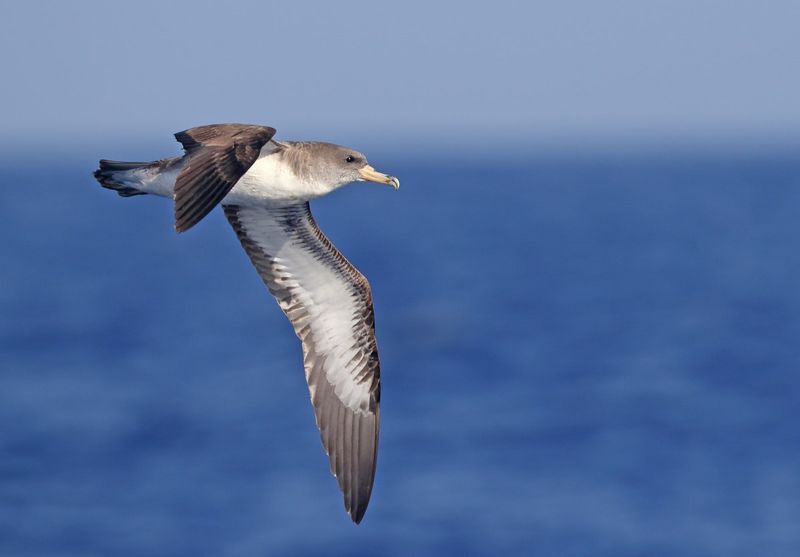
Cory’s Shearwater is an adept ocean navigator, known for its long migrations across the Atlantic. With a large wingspan and robust body, it traverses vast oceanic distances.
Their elegant flight is characterized by long, graceful glides, allowing them to cover significant miles without much effort. The plumage of Cory’s Shearwater is a subtle blend of grey and white, matching the sea’s ever-changing hues.
These birds are a testament to the adaptability and endurance required to survive in the open ocean. Their journeys are a spectacle of nature’s enduring spirit.
Pomarine Jaeger
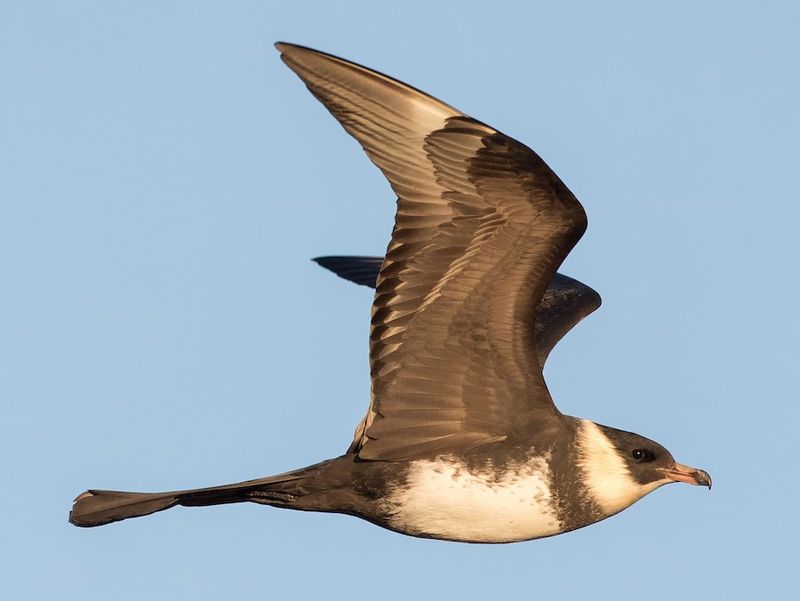
The Pomarine Jaeger is a formidable presence over the ocean, known for its powerful build and striking plumage. With broad wings and a distinctive tail, it covers vast maritime distances.
These birds are impressive hunters, often pursuing other seabirds to snatch their catch. Their migration routes span across hemispheres, showcasing their incredible endurance.
The Pomarine Jaeger’s adaptability to life at sea reflects a remarkable evolution of survival skills. Their flights are not just journeys, but dynamic interactions with the marine ecosystem, highlighting the complexity of life over the ocean.

